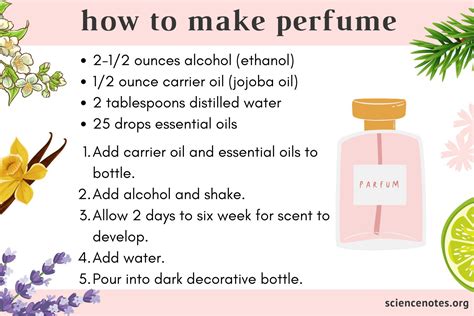How to Produce Perfume: A Guide from Concept to Creation
Creating your own perfume can be a deeply rewarding experience, blending art and science to craft a unique fragrance. This guide walks you through the process, from initial concept to final bottling, helping you understand the nuances of perfume production.
Phase 1: Conceptualization & Research
Before diving into the creation process, a solid plan is essential. This phase focuses on defining your perfume's identity and gathering the necessary knowledge.
1. Defining Your Fragrance Profile:
- Target Audience: Who is your perfume for? Understanding your target audience helps shape the fragrance's character and overall appeal. Are you aiming for a youthful, fresh scent, or something mature and sophisticated?
- Fragrance Family: Choose a fragrance family (e.g., floral, oriental, woody, fresh) to guide your scent selection. Each family has distinct characteristics that influence the overall feel of the perfume.
- Key Notes: Determine the top, middle, and base notes of your fragrance. Top notes are the initial burst of scent, middle notes form the heart of the fragrance, and base notes provide the lasting foundation.
- Mood & Inspiration: What feeling or image do you want your perfume to evoke? Inspiration can come from anywhere – nature, memories, art.
2. Sourcing Your Materials:
- Essential Oils: These are the heart of your perfume. Research different essential oils, understanding their individual scents and how they interact with others. Consider the quality and source of your essential oils for the best results. Look for reputable suppliers specializing in high-quality botanical oils.
- Fragrance Oils: These offer a wider range of scents and are often more cost-effective than pure essential oils. They're a good option for experimenting and creating unique blends.
- Carrier Oils: These dilute the essential oils, extending their longevity and preventing skin irritation. Popular choices include jojoba oil, fractionated coconut oil, and sweet almond oil.
- Bottles & Packaging: Choose attractive bottles and packaging to enhance your perfume's presentation.
Phase 2: Perfume Creation
This is where the magic happens! Creating a perfume is a blend of art and science, requiring careful measurement and experimentation.
1. The Blending Process:
- Small Batches: Start with small batches (e.g., 5-10ml) to experiment with different combinations of oils.
- Accurate Measurement: Precise measurements are crucial. Use a graduated cylinder or a precise dropper for accurate addition of oils.
- Testing & Adjustment: Test your blends regularly, allowing time for the scent to develop and settle. Adjust the ratios of oils until you achieve your desired fragrance.
- Maceration: Some perfumers allow their blends to macerate (rest) for a period to allow the oils to meld and mature.
2. Dilution & Carrier Oil:
- Determining Dilution: The concentration of essential oils in your perfume will determine its strength. This is expressed as a percentage. Experiment to find the ideal dilution for your fragrance.
- Adding Carrier Oil: Slowly add your chosen carrier oil, mixing gently to ensure even distribution.
Phase 3: Bottling & Presentation
Once you've perfected your fragrance, it’s time to present it beautifully.
1. Filling the Bottles:
- Cleanliness: Ensure your bottles and tools are thoroughly cleaned and dried before filling.
- Careful Pouring: Pour the perfume into your bottles carefully, avoiding spills.
- Labeling: Design attractive labels that communicate your perfume's name, notes, and any other relevant information.
2. Marketing & Sales (Optional):
If you're making perfume for sale, consider creating a brand identity, marketing strategy, and sales channels.
Conclusion: Embark on Your Perfume Journey
Producing your own perfume is a journey of discovery and creativity. By following these steps and allowing your creativity to guide you, you can craft unique and captivating fragrances. Remember that practice makes perfect, so don't be afraid to experiment and have fun with the process!
